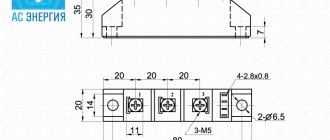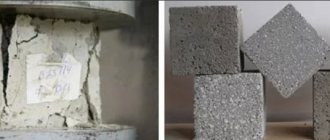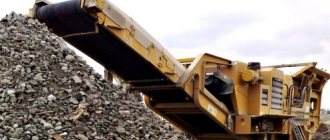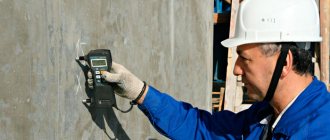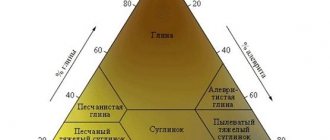Heating and drying systems for small concrete structures in wooden and insulated formwork, including columns, foundations, paths and plateaus, 0.40 kW/m
Heatway flexible heating elements are designed for heating and maintaining concrete in the manufacture of foundations, columns, reinforced belts, and floors of wooden houses. They are used when pouring townhouses, small monolithic concrete structures and technological grouts along with the traditional pair PNSV - heating transformer . 6 types of flexible heating elements from 3.3 to 85 meters operate from 220V and hold 40 W/m linear. The insulation allows operation with a mixer and vibrator; a nichrome thread with a screen ensures uniform heating of the element and its fixation at 80 degrees Celsius. The absence of boiling and burnout, as well as the use of a single heating circuit with a reinforcing grid, allows the use of flexible heating elements from Heatway for critical monolithic structures, avoiding the effect of yeast dough and reducing the strength of concrete.
Heatway provides savings not due to the price per meter of cable products, but by reducing the cost of both purchase and storage, as well as maintenance, rental, delivery and loading of expensive heating equipment with the involvement of specialists in carrying out calculations and organizing duties at heating transformers in the private sector , as well as by combining the main volumes of monolithic work with technological fillers and structural elements in the professional segment.
In summer, we protect the concrete from direct sunlight, moisturize and cement it. Heatway provides high-quality care for concrete in winter; it can be conveniently combined with concrete additives.
Why heat up concrete?
If the air temperature outside is below + 5 degrees, and it is necessary to pour a foundation or any other structure, first it is important to know why you need to heat the concrete with a transformer. There is a simple and logical explanation for this question: at sub-zero temperatures, the water contained in the cement mortar freezes. On the surface this is visible almost immediately, but inside the material, after a couple of hours, the water turns into ice crystals of microscopic size. That is, the solution hardens in places and simply freezes in others.
It follows from this that water in an inert state does not react with cement, hydration does not occur, and therefore the material does not harden as expected. In addition, water increases in volume turning into ice. As a result, the foundation will collapse from the inside. A transformer for heating concrete, the price of which is not too high, will serve as an excellent assistant in such a situation and will allow you to avoid destruction of the foundation.
And here you will read about stone cutting machines and what they are used for.
Features of the heating cable PNSV
The relatively high consumption is compensated by the low cost of the wire, which is made of ordinary materials: the core is made of heat-treated low-carbon steel, the insulating sheath is made of PVC plastic or polyethylene. The design of the most popular heating cable PNSV with a wire diameter of 1.2 mm ensures safety and the necessary technological parameters:
- electrical resistance – 0.15 Ohm/m;
- operating current in concrete mass – 15 A;
- specific power – 35 W/m;
- supply voltage – 35-80 V;
- diameter – 2.4 mm.
Since the electrical wire operates in contact with a moist environment and reinforcement, to connect the heating circuit, a step-down transformer is used to heat the concrete, connected to the busbar with a flexible cable KG - 1x70.
The insufficient flexibility of the steel core imposes restrictions on the minimum bending radius of the electrical wire, which must be at least five diameters. This does not prevent compliance with the laying step, which for various concrete structures ranges from 25 to 200 mm, but in order to avoid overheating it must be more than 1.5 cm.
The resistive wire can be installed at temperatures from -25°С to +50°С, and operated from -60°С to +50°С. The copper cable KG - 3x16 + 1x6, which connects the transformer for heating the concrete to a 380 V network, also operates within the same temperature limits.
How to use a transformer?
Before you begin construction work, you need to know how to heat concrete with a transformer. There are several ways to carry out such work. First, let's look at one of them.
Heating concrete with a transformer is not a simple technology, but at the same time it is not too complicated. The main thing is to follow the instructions below.
- It is necessary to place heating wires specially designed for this purpose in the formwork, even before filling it with solutions. Practice shows that steel ones with a 3-mm core give excellent results. A wire with a 1.2 mm PNSV core in polyvinyl chloride insulation also prevents freezing. PNSZh - conductors 2 by 1.2 mm are also perfect;
- heating elements should be laid so that they do not come into contact with the reinforcement, formwork, or with each other;
Important ! When pouring the solution into the formwork, you need to ensure that the wires are covered with the mixture on all sides. Otherwise, due to poor heat dissipation, the heating element will simply burn out.
- the formwork together with the conductors is filled with mortar;
- a transformer station (step-down with direct current) is connected to the outputs of the heating elements.
Important! When the transformer is connected, you need to control the quality of the heating. To do this, at the stage of filling the formwork, wells in the form of thin tubes are provided. Temperature readings are taken through them.
To warm up a concrete structure, it is preferable to use transformer systems such as TMOB, KTP or KTPTO. Such devices create direct current from alternating current, the strength of which is high, due to which the wires quickly heat up in concrete. There are transformers that heat concrete without putting wires into the formwork. For example, the KTPTO 80 station makes it possible to connect directly to a reinforced frame.
Heatway - cable for heating concrete
- The Heatway system is designed for heating and drying small concrete structures in wooden formwork, as well as for the production of open terraces and entrances to parking lots. The most powerful 40 W/m linear cable on the market allows operation with a mixer and vibrator, ensures uniform heating without boiling or burning out of PNSV type wires, which are usually used in several circuits, and violation of the heating mode of which can lead to the effect of yeast dough in concrete.
- The use of Heatway ensures uniform heating of concrete and provides savings not due to the price of the wire that remains in the concrete, but due to the cost of purchase, storage, maintenance, rental, transportation and reloading of expensive heating equipment with the involvement of specialist labor for calculations and installation of circuits, organization duties and adjustments.
- Heatway is recommended for use with additives, provides rapid maturation of concrete and provides excellent capabilities for finishing finishing work with drying.
- The Heatway system is convenient for low-rise housing construction, as well as for the manufacture of columns, partitions and technological linings at large facilities.
Heating concrete with electrodes
This is another way to heat a newly poured solution using a transformer. Electrodes can be surface or internal. The first ones are sewn or striped, as well as plastic. The latter look like strips, string rods or rods of steel. To warm them up, they are inserted inside the block. If you use string electrodes, then they need to be placed in the formwork at a three-meter length along its axis. In the version with rods, they are placed perpendicular to the plane of the structure.
In order to connect the mounting wires, the ends of the electrodes must be brought out. In this case, when the current is connected, the concrete will become a conductor. The electrical energy contained in it will be converted into heat, as a result of which energy losses are minimized. After installing the electrodes in concrete, they should be compacted using so-called vibrators. To insulate the structure, the structure is covered with roofing felt, and a thick layer of sawdust is placed on top. Connecting a transformer to heat the concrete should occur only after the electrodes are evenly laid and the gaps between them are equal.
A useful article about cutting joints in concrete, what it is and how it is done.
Technical characteristics of KTPTO 80
| Rated power, KVA | 80 |
| Diagrams and connection groups | U/U-0 |
| No-load current, A | 3 |
| Output voltage, V | 55,65,75,85,95 |
| Permissible phase currents, A: at voltages, V | 55,65– 520; 75,85,95 – 471 |
| Operating mode | long |
| Degree of protection | IP22 |
| Overall dimensions, mm | 1080*785*1400 |
| Weight, no more, kg | 700 |
These transformers are connected to a PNSV heating wire laid inside the concrete, through which an electric current is supplied, which is converted into a temperature reaching up to +80 degrees. Concrete has good thermal conductivity, so the transferred heat gradually spreads across the entire treated area, warming it up to the desired temperature in a short time.
Thus, rapid and uniform hardening of concrete occurs without destruction of its structure and loss of quality characteristics. Concreting with a warm-up transformer equipped with a PNSV wire is possible in frosts down to -40 degrees. Transformers for heating concrete and frozen soil are indispensable equipment in construction on objects of any size during the cold, winter season.
KTPTO 80 is the most popular of all models of heating stations in Russia. The abbreviation KTPTO stands for complete transformer substation for heat treatment, but many simply call it a transformer for heating concrete.
The components of KTPTO 80 are a control cabinet, a power transformer with a casing and a slide. It is based on a three-phase transformer TMTO-80/0.38, located in an oil bath, due to which heat is removed and natural cooling occurs. That is why the KTPTO 80 transformer is called oil transformer. Thanks to this cooling, the station can better withstand overloads in the event of a short circuit, breakage of the heating wire, or phase imbalance. If construction work is carried out in a cold, damp room, then electric, diesel or gas heat guns can be used to additionally warm the air.
The complete transformer substation is designed for heat treatment and electrical heating of concrete and soil with a voltage of 380/55-95 V, a power of 80 kVA for outdoor installation. Normal operation of KTPTO-80 is ensured in areas with a temperate climate under the following conditions: altitude above sea level - no more than 1000m; ambient temperature from plus 10 to minus 45 C; atmosphere type II according to GOST 15150-69.
Heating concrete with a welding transformer
You can warm up a small structure, for example, a foundation, using a two-phase welding transformer. Warming up concrete with a welding transformer is similar to the heating process described above. Having previously calculated the heating method, it is necessary to divide the PNSV wire into the required number of pieces of the required length. Tighten an aluminum wire to each of them on one side and the other. These will be cold ends. Their length must reach the transformer, while the twisting points must be in the formwork.
The sections must be laid in formwork. In order to avoid short circuits, the wires should be tied with plastic fasteners to the fittings. After this, you can fill the foundation with mortar and connect the cold ends to the welding transformer. You can first solder the terminals to the cold ends, determining where is plus and where is minus. The terminals are connected to the reverse output and to the direct output of the welding machine transformer, having previously set the minimum current on it.
Next, you should measure the current: on each individual segment there should be up to 20 Amperes, on the welding wires - up to 240 Amps. Another way to heat concrete with a welding transformer is to use electrodes.
Principle of operation:
- Place electrodes in the formwork. They must be connected in series so that segments separated from each other are obtained.
- Connect the forward wire to one of the segments, the return wire to the other segment.
- An incandescent lamp can be used to control the current between the electrodes.
Why do you need a transformer when heating concrete?
Some may have a question: is it possible to directly connect the heating elements to the electrical network? It’s worth noting right away that this option is very dangerous , and severe overheating may occur in a certain area. Therefore, for a correct warm-up procedure from a technological point of view, it is necessary to reduce the voltage. This is why you need a transformer.
The unit, which is used to heat the mixture during the concreting process, runs on electric current. After preparation, the mixture is heated by electric current, which is converted into heat energy, while the concrete acts as a conductor.
If you use a transformer, the building mixture can be heated to a certain temperature per unit of time. It is important to select a unit with a certain power . The presence of several modes allows you to adjust performance and choose the best option for specific conditions.
To calculate the required power, it is necessary to take into account that to warm up 1 cubic meter. meter of working mixture requires 1.3 kW . At very low air temperatures, the power should increase, at high temperatures it should decrease. Wire length per 1 cubic meter. meter should be between 30 and 50 meters.
Conclusion
These methods are most often used at home. In industrial buildings, only specialized devices are used that ensure heating of the concrete by a transformer. A video on the Internet on this topic will allow you to become more familiar with the technology of heating concrete structures. After all, the principle of operation that you see is much clearer compared to what you read. In addition, before you begin one of the above processes of heating structures during winter construction, you should carefully study all the diagrams and operating principles of transformers. On the Internet you can find a lot more information on the request “heating concrete with a transformer”, reviews of people who have already done such work, as well as numerous advice from specialists with extensive experience in this field.
We recommend reading: a hammer drill for working on concrete.
Transformers (stations) for heating concrete KTPTO-80 and TSZPB
One of the most popular methods of winter concreting is electrical heat treatment of concrete.
In recent years, the following methods of electrical heat treatment of concrete have been proposed and become widespread: electrode heating, heating in an electromagnetic field (induction), contact heating (heating with various electric heating devices, including infrared radiation).
Electrical heating of concrete is a method that requires a careful and thorough approach. Electricity costs and the quality of concreting in this case depend on the conductivity of current by concrete and on changes in its resistivity. So, if at the beginning of cement setting the concrete resistance drops and the conductivity of the electric current increases, then when the concrete reaches 50-60% of the design strength, its resistance increases several times. In order to prevent the temperature of the concrete from falling at this moment, it is necessary to significantly increase the voltage. This problem can also be solved by using electrolytes as additives to concrete, which significantly reduce the resistance of concrete.
The electric heating method has proven itself in practice to be one of the most economical. The cost of electrical heating of concrete is 7-10% of its total cost, and electrical heating of reinforced concrete is 10-15%, including 20% of equipment costs. Compared to steaming and hot houses, electric heating is 30-40% cheaper.
To perform concreting in low temperature conditions, our company offers concrete heating stations based on dry and oil transformers.
KTPTO-80 is a complete transformer substation for heating concrete with manual and automatic control. The station is equipped with a three-phase three-winding oil transformer TMTO-80/0.38 with natural cooling. In addition to heating concrete, it can be used to power various loads with a voltage of 42 V (power tools, temporary lighting, etc.). To ensure the safety of operating personnel, the station is equipped with a locking system. The KTPTO-80 station can be used at temperatures down to -40° C.
TSZPB is a dry three-phase two-winding transformer of protected design. Designed for heat treatment of concrete and frozen soil.
- Rated voltage - 380 V
- B Rated power - 63 kVA
- Nominal frequency - 50 Hz
- Degree of protection - IP23
- The lower operating value of the ambient air temperature is up to -40° C
Advantages of renting a transformer for heating concrete
The cost of renting equipment is compensated by the significant benefits obtained as a result:
- construction is carried out in any season;
- there is no downtime in work;
- construction time is reduced;
- team productivity increases;
- ready-made concrete has high strength characteristics;
- there is no need to purchase expensive additives and hardeners;
- By using an inexpensive mixture, money is saved.
